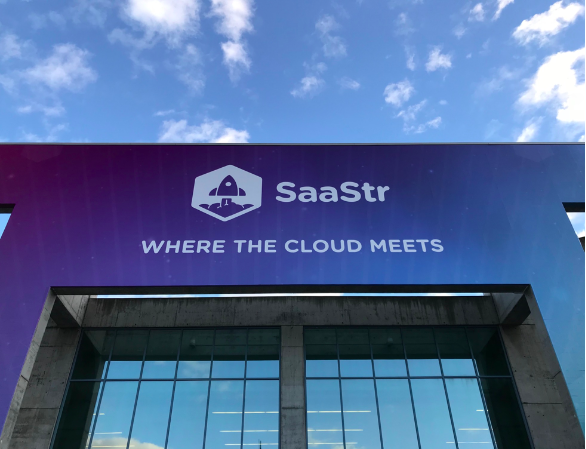3 Key Insights from the World’s Premier SaaS Event

Lakehouse Capital
Value creation among software-as-a-service (SaaS) companies can be explosive -- Atlassian is now worth more than Coles and Amcor despite their near-century headstarts -- which is why I hopped on a plane to head to Silicon Valley for SaaStr 2019.

SaaStr is the premier global gathering of founders and investors with SaaS on their minds. The event has immense gravitational pull with over 12,000 attendees hailing from 94 countries and representation from the likes of Alphabet, Amazon, Slack, and a slew of other leading tech companies.
Skipping across the Pacific is a big trip that requires a lot of time and coffee. Fortunately for those curious about the leading edge in SaaS, though, I’ve distilled some of the key insights from the 3-day event into the following:
1. Self-serve selling is gaining steam.
The traditional model of selling enterprise software involves sending a high-priced, well-dressed sales team into the CTO’s office to pitch her on a sweeping, company-wide solution. The process is a slow, costly burn that is downright torturous for startups who are light on cash and proofpoint customers.
A steady drumbeat at SaaStr, though, is that the tide is shifting towards a self-serve model popularised by Atlassian. Individual users can simply drop by Atlassian’s website and get started using Jira without getting sold to, politicking for a big internal budget, laboring through a big RFP process, or haggling over pricing. As the company says, “Our products are bought, not sold.”
The self-serve model turns enterprise selling on its head, and that includes making for better economics for the SaaS vendor. Customers can get started with the product in minutes, not months, and costly sales forces are displaced with more affordable customer success teams. Even better, revenue can grow at high rates for a long time as users grow to trust and advocate for the product internally, making for even more users who oftentimes use more modules.
The net effect is that high-quality, self-serve-centric SaaS vendors can not only end up with net revenue retention rate north of 100%, but they need less capital to scale in the process. That’s a big reason why the Atlassian co-founders still own so much of such a hugely valuable business.
One important caveat: A product that sells itself needs to be strong enough to generate network effects or word-of-mouth buzz, which is easier said than done. But it is possible -- witness Atlassian’s Jira and the eponymous products at Slack and Zoom -- and the companies who can pull it off capture economic lightning in a bottle.
2. Small tilts in retention rates can make huge differences in value.
A strong conviction of mine is that most investors massively underestimate the importance of even small changes in retention rates. It’s a mundane but exponential topic.
Here’s a quick example. Let’s say you’ve got two SaaS businesses, one with an 80% customer retention rate and another at 90%. The optics of 80% vs. 90% are pretty similar if you’re new to evaluating SaaS businesses, but the average customer life of the business with 80% customer retention is only 5 years, or just half the 10-year average of the business that retains 90% of its customers.
The economic impact is huge. The business with 90% retention can choose to spend roughly double what its weaker rival does to acquire customers and yet still earn a comparable return on that spend. Odds are also good that the business with higher retention also has superior pricing power plus a stronger foundation on which to cross- and up-sell.
Given that fascination of mine, my interest was piqued when Kristina Shen and Byron Deeter of Bessemer Venture Partners hammered this point in their annual State of the Cloud presentation, which I recommend and you can now read online.
A shift from a net revenue retention rate from 110% to 125% can increase the enterprise value of a business by 75%, according to Shen and Deeter, double-underscoring an important point about SaaS businesses: They might all have similar-sounding economic models but the ones with above-average retention rates are usually worth paying a premium for.
3. Implementation separates the contenders from the pretenders.
Talk to someone who has been in the trenches of a large-scale technology project and they’ll tell you that implementations are just like any other large project: The costs, scope, and headaches are usually underestimated, and sometimes massively.
Implementations go awry all kinds of ways. Maybe the sales team over-promised, the company can’t staff up to meet the challenge, the project is far more complex than expected, or maybe the company just plain drops the ball. In any case, a botched implementation almost always involves a disgruntled customer, delays, higher costs, and a lot of finger pointing.
It’s not pretty when implementations go sideways. Embarrassing headlines, such as when the Queensland government was so frustrated with IBM that they took Big Blue to court, can stain your reputation, which is a huge blow in enterprise sales as many buyers won’t commit without first hearing about high-profile success stories.
Companies can even lose committed customers during the implementation process. One sales rep that I spoke with from a listed company at SaaStr told me that he’s twice had customers who first opted to go with another large and listed competitor come back with their tails behind their legs (and their wallets thinner) because this rep’s rival couldn’t muster an experienced implementation team to get the project done on schedule. The customer lost patience, pulled the ripcord, and probably bad mouthed the vendor who dropped the ball to everyone they knew.
It’s a story we’ve heard before in our conversations with CEOs of Australian tech companies as well, which has led us to flip this challenge on its head by seeking out companies that delight customers with implementations that run on budget and ahead of schedule. Not only does that suggest the company has its stuff together, it also makes for happier, more loyal customers who are -- and this is big -- game to act as references.
It’s hard to find companies that crush it on implementations -- most companies gloss over this aspect of the business with investors -- but one standout is Pro Medicus. In an industry where blowing deadlines is typical, the company has bolstered its reputation by getting its system up and running ahead of customers’ expectations, helping it to gobble up even more market share. For example, the company told us that it delivered one large project that the customer had slated for an 18-month implementation in only six months.
Along with a great balance sheet, talented and aligned leadership team, and industry-leading technology, the company’s impressive ability to get large implementations done ahead of schedule was a quiet but important signal that helped us get interested in the company a couple of years back. But that’s a story for a different day.
The Bottom Line
SaaS is an exciting space because so much value creation is occurring so quickly. Still, it is also evolving at a rapid pace and each company has its own economics and market opportunity, so investors should be careful to not confuse the pretenders for the contenders. In fact, I smell a follow-up column...
Joe Magyer owns shares of Alphabet and Amazon. The Lakehouse Global Growth Fund owns shares of Alphabet, Amazon, and Atlassian. The Lakehouse Small Companies Fund owns shares of Pro Medicus.
Never miss an update
Stay up to date with the latest news from Lakehouse Capital by hitting the 'follow' button below and you'll be notified every time I post a wire.
Lakehouse’s unique investment approach focuses on key themes of Intellectual Property, Network Effects and Loyalty. Find out more here.
1 topic
1 stock mentioned

Joe is the former co-founder. Please visit and follow Donny Buchanan and Nick Thomson for the latest insights around Lakehouses’s unique concentrated investment approach that focuses on the key themes of Intellectual Property, Network and Loyalty...
Expertise

Joe is the former co-founder. Please visit and follow Donny Buchanan and Nick Thomson for the latest insights around Lakehouses’s unique concentrated investment approach that focuses on the key themes of Intellectual Property, Network and Loyalty...
